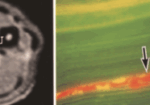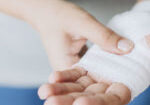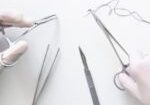Hand Therapy: Conservative Management of Pediatric Monteggia Fractures
Filed under Diagnoses
Conservative Management of Pediatric Monteggia Fractures
Monteggia fractures in children comprise approximately 2% of pediatric elbow fractures and involve a fracture of the proximal ulna with dislocation of the radial head (Fig. 1). The primary concern of Monteggia fractures includes the treatment (monteggia fracture treatment pediatric) and relocation of the radial head, because if left untreated it can lead to chronic elbow disability, progressive deformity, and loss of pronation/supination movement1.
Fig. 1. Pediatric Monteggia fracture showing a proximal ulnar shaft fracture and a proximal radial dislocation.
A study by Foran, et al., 2017 demonstrated that 83% of Monteggia fracture patients were successfully treated with conservative methods and did not require surgical intervention without compromising outcomes or increasing risk of complication. Typically, patients are immobilized either in a cast or custom thermoplastic long-arm orthotic for 4-6 weeks (Fig. 2).
Fig. 2. Custom thermoplastic long-arm/ Muenster orthotic to support forearm and block full elbow range of motion.
Patients are highly monitored throughout the first three weeks, as this is the time period when instability is most likely to occur. If there is adequate healing of the ulna between 4-6 weeks, the cast is removed and the patient transitioned to removable forearm orthotic, at which time, therapy is initiated1.
Special considerations to monitor for:
- Compartment syndrome
- Gradual decreasing range of motion:
- Tendon/nerve injuries
- Skin breakdown
- Risk of recurrent fractures up to 6-12 months
Therapeutic interventions:
- Mobility to wrist/forearm
- Range of motion to all joints involved in orthotic
- Ideas include: painting on vertical surface, playing cards, tossing magnetic darts, wrist maze, sport simulation (overhead tossing, dribbling, racket movements, etc.)
- Building endurance
- Grip/pinch/lift strengthening and weight bearing
- Ideas include: animal walks for weightbearing, wall push-ups against yoga ball,
- Desensitization
- Over fracture site or in fingertips after nerve injury
- Ideas include: sensation kit (small squares of various materials transitioning from smooth to rough: velvet/moleskin, foam, Velcro, netting, sandpaper, etc.)
- Neuromuscular ed-education
- Re-training of movement patterns for ADL’s that are compromised from fracture involvement
- Ideas include: tendon glides, nerve glides, NMES for muscle activation
- Orthotics to prevent joint contractures & promote functional positioning
- Orthotics to protect over fracture site and prevent re-fracture
- Dynamic orthotics to support muscles groups weakened by neuropraxia/ injury
1. Foran, I., Upasami, V.V., Wallace, C.D., Britt, E., Bastrom, T.P., Bomar, J.D., & Pennock, A.T. (2017). Acute pediatric monteggia fractures: A conservative approach to stabilization. Journal of Pediatric Orthopedics, 37(6), 335-341.
More To Read
Mechanism of Interneural Edema in Carpal and Cubital Tunnel
Mechanism of Interneural Edema Over the last few weeks I have been learning about ultrasonic imaging and carpal tunnel syndrome. When reviewing carpal tunnel syndrome, I learned that intraneural edema is a common sign of compression injuries such as carpal tunnel and cubital tunnel. There are numerous causes of carpal tunnel syndrome, and every scenario…
Read MoreThe 4 Stages of Simple Wound Care in Hand Therapy
Wound care is messy. It can be intimidating and scary. With so many variations of wounds (for example, white skin around wound) and so many products out there it is hard to know what to use, when to use it, and how to use it. If you go to a wound care conference, you’ll spend most…
Read MoreWhat? I just received an order for suture removal…
How many of us have practiced suture removal in occupational or physical therapy school?? NOT I!! Often, hand surgeons will ask the therapist to remove sutures and sometimes the order will even say “remove sutures when ready” SO NOW WHAT? How to remove continuous sutures? First, we can cover the basics of sutures! There are…
Read MoreEfficacy of Virtual Reality Rehabilitation after Spinal Cord Injury: A Systematic Review
De Araújo, A. V. L., Neiva, J. F. D. O., Monteiro, C. B. D. M., & Magalhães, F. H. (2019). Efficacy of virtual reality rehabilitation after spinal cord injury: A systematic review. BioMed Research International, 2019(1), 7106951. https://doi.org/10.1155/2019/7106951 Efficacy of Virtual Reality Rehabilitation after Spinal Cord Injury Emilee Sanders, OTS The Skinny: Virtual reality (VR)…
Read MoreSign-up to Get Updates Straight to Your Inbox!
Sign up with us and we will send you regular blog posts on everything hand therapy, notices every time we upload new videos and tutorials, along with handout, protocols, and other useful information.






